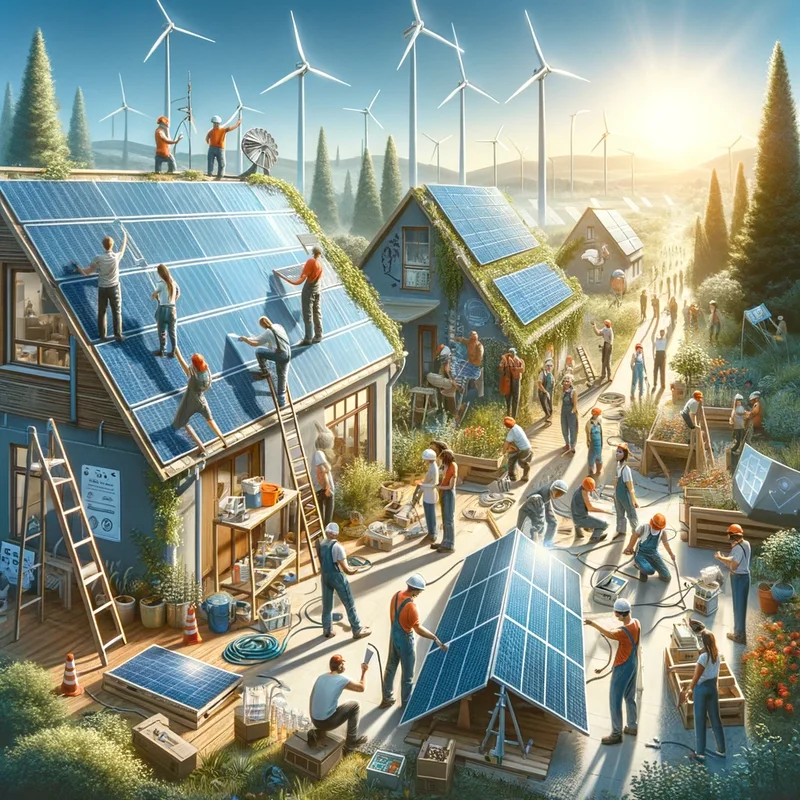360° Financial Trend Detection
360° Financial Trend Detection
On paper, it was one of the most ambitious solar projects on the planet. The Esmeralda 7 project in Nevada was a behemoth, a network of solar and battery installations slated to cover 185 square miles of desert. To put that in perspective, that’s a footprint roughly the size of Las Vegas itself. The output was equally staggering: 6.2 gigawatts of power, enough to keep the lights on in nearly 2 million homes—1.9 million, to be more exact, based on average U.S. household consumption. This wasn't just another solar farm; it was a statement of industrial-scale energy transition.
And then, it vanished. With a quiet update to a government website, the Bureau of Land Management (BLM) changed the project’s status to "cancelled." Trump officials cancel major solar project in latest hit to renewable energy.
You can almost picture the sterile quiet of a Washington D.C. conference room as a single mouse click erased billions in potential investment and years of planning. There was no market crash, no technological failure, no geological surprise. There was only a political decision. The official explanation from the Interior Department is a masterpiece of bureaucratic obfuscation. They claim the developers and the BLM "agreed to change their approach," shifting from a single "programmatic" environmental review to a series of "individual project proposals."
I've analyzed regulatory filings for years, and the official justification here is a classic red flag. It’s a move designed to create administrative friction, not efficiency. Breaking up a massive, interconnected project into smaller, separate reviews is like trying to build a skyscraper by approving the blueprints for each floor individually, without ever looking at the master plan for the whole building. It invites delays, creates redundant processes, and allows for individual components to be picked off one by one. It's a death-by-a-thousand-papercuts strategy, and it’s remarkably effective at killing large-scale infrastructure. Why would any rational actor "agree" to this unless it was the only option presented?
This cancellation doesn’t exist in a vacuum, of course. It’s a predictable data point in a clear trend line. The administration’s day-one executive order pausing new renewable projects on federal land, the appointment of a former oil industry lobbyist to run the BLM, and the President’s own unambiguous post on Truth Social ("We will not approve wind or farmer destroying Solar") all pointed to this outcome. This isn't a nuanced policy shift. It's a sledgehammer.

While the U.S. was busy dismantling its own energy ambitions, another story was unfolding in South Africa. There, regulators approved the Carissa Wind Energy Facility, the nation's largest wind farm. The numbers are smaller than Esmeralda 7, but the strategic clarity is what’s worth noting. The project consists of 154 turbines set to deliver 1,000 megawatts (or 1 gigawatt) of power. Energy company announces massive project that will transform power grid: 'We are extremely proud'.
But here’s the critical detail: that power is already spoken for. It’s earmarked to run a green ammonia plant, a cornerstone of South Africa’s burgeoning green hydrogen industry. This isn't just about adding clean megawatts to the grid; it's about using renewable energy as a foundational block for a next-generation industrial ecosystem. The project’s developers, in a joint statement, praised the approval as "the outcome of true teamwork" and a "well-managed process."
The contrast is stark. One country provides a stable, predictable regulatory framework that allows capital to flow toward a clear, strategic national goal. The other introduces radical uncertainty, making long-term, capital-intensive planning nearly impossible. The scale of the Esmeralda 7 project is so vast, it's the kind of case study you'd see in textbooks or as a model for ambitious renewable energy projects for students of engineering and public policy, but now it will be a lesson in political risk, not technological achievement.
The cancellation of a project this size sends a powerful signal to global capital markets. Infrastructure investors, the kind who manage pension funds and sovereign wealth, prize stability above all else. They need to know the rules of the game won't be arbitrarily rewritten mid-play. When a project that had already advanced to a draft environmental impact statement can be summarily executed, what does that say about the viability of any other major project on federal land? How does a firm like NextEra or Invenergy price that kind of political risk into its next proposal? Do they even bother?
The narrative here is not about solar versus oil, or one administration's policy versus another's. From a purely analytical perspective, this is about the introduction of extreme volatility into a sector that relies on long-term stability. The 6.2 gigawatts of lost power is the headline number, but it’s not the real damage. The real damage is the erosion of regulatory predictability. Capital is a coward; it flees uncertainty and flows to where the rules are clear and the outcomes are bankable. By making the U.S. a volatile and unpredictable place to build, we are actively encouraging investment to go elsewhere—to places like South Africa, where a "well-managed process" is still a source of pride, not a political obstacle. The Esmeralda 7 project wasn't just cancelled; it was a multi-billion-dollar asset that was deliberately and consciously written off the nation's future balance sheet. And that is a cost we'll be paying for a long, long time.